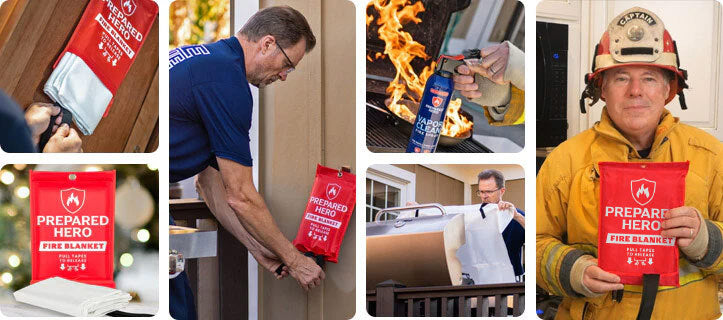Where you put your smoke detectors matters just as much as installing them. Proper placement makes sure they can detect...
Fire alarms keep us safe, but they can be annoying when they beep nonstop with no fire in sight. While it can be frustrating, a beeping fire alarm might be a sign of a low battery, dust buildup, or a wiring issue. If you want to turn it off without compromising safety, we’re here to help.
In this guide, we’ll talk about what’s causing the unnecessary noise, how to stop it safely, and keep your fire alarm working the way it should.
Why You Need a Fire Alarm

Fire alarms are one of the most important safety tools you can have. They warn you the moment smoke, fire, or carbon monoxide is detected. This early warning gives you time to get out safely or act fast to control the situation. Whether it’s a big building or your own home, fire alarms help protect lives and property.
They also work with other fire safety tools like fire blankets, fire sprays, and flame shields. While a blanket or spray helps stop small flames before they grow, fire alarms let you know when it’s time to use them or when to evacuate. Together, they create a solid fire prevention setup.
Even if you can’t afford a full system, having smoke detectors in key areas, like bedrooms and kitchens, makes a big difference. Don’t wait for a close call. Install them, test them monthly. It’s an easy way to stay ready and safe.
Understanding Your Fire Alarm System
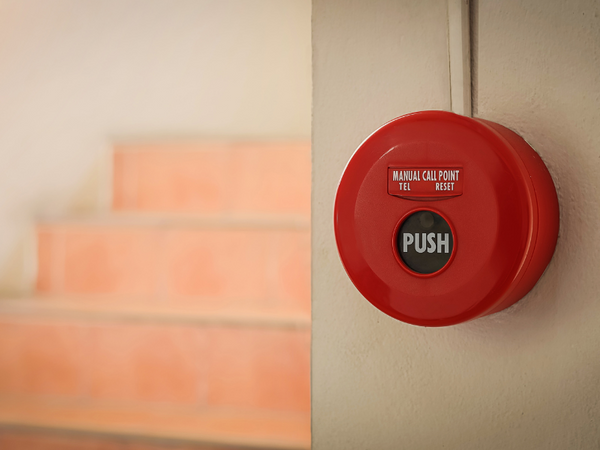
Knowing how your fire alarm works, what parts it includes, and which fits your needs can make a big difference in an emergency.
1. Learn the Different Types of Fire Alarm Systems
Not all systems are built the same. The best one for you depends on your space. Here are the different types of fire alarms:
Conventional Fire Alarms
These fire alarms work well in small buildings. They divide the space into zones, so you know where to look if something goes off.
Addressable Fire Alarms
They work best for larger buildings. Each device has its own ID, so it’s easy to pinpoint the exact spot.
Wireless Fire Alarms
They’re suitable for older buildings or places where you don’t want to deal with a lot of wiring. They’re also easier to install.
2. Know the Core Components of Your System
Every fire alarm setup includes key parts that work together to detect problems and warn people. Here are the core parts of a fire alarm system:
Control Panel
The fire alarm control panel is the brain of the system. It links all devices, including smoke detectors, pull stations, and sprinklers. It can also control things like elevators and ventilation.
Initiating Devices
The initiating devices start the alarm. They can be manual (like pull stations) or automatic (like smoke and heat detectors). Manual ones need someone to activate them, while automatic ones detect fire signs on their own. Some systems also use carbon monoxide detectors for extra protection.
Notification Devices
Notification devices warn people when there’s a fire. Audible ones include horns and speakers. They follow a Temporal-Three pattern, so people can easily recognize the sound. On the other hand, visual ones use strobes for those with hearing issues. Some systems use voice messages for clear evacuation instructions.
Primary Power Supply
It’s the main power source, usually from the building’s electricity. It keeps everything running under normal conditions.
Backup Power Supply
A fire alarm system uses batteries or generators if the power goes out. Batteries kick in immediately, while generators are used in larger buildings for longer backup.
3. Understand the Extra Features That Add Protection
Modern fire alarm systems have handy features that make fire safety easier. Here they are:
- Automatic alerts can notify emergency services when something’s wrong.
- Built-in test tools let you check if everything’s working properly.
- Integration with other safety systems, like sprinklers or emergency lights, gives you fuller coverage.
- User-friendly controls make it easy for anyone to use and monitor the system.
Preparing to Turn Off the Fire Alarm System

Take a quick pause and assess the situation before turning off your fire alarm. Having the right tools and knowing how your system works makes it easier to fix the problem without creating new ones. Here’s what to do before turning off your fire alarm system:
1. Make Sure It’s Safe
Before touching anything, check the area to confirm there’s no fire or smoke. Don’t risk it if there’s a slight sign of danger. Get out and call emergency services right away. Remember, your safety always comes first.
Next, think about protective gear if the area is clear. You might need gloves or safety glasses, especially if you're dealing with wires or opening the unit.
Be careful if your fire alarm is connected to other systems, like home security. Turning off one part could affect the others. Plus, don’t forget to check your alarm’s manual because it usually includes safety tips specific to your model.
2. Know What Type of System You Have
Different systems work in different ways. Knowing what you're dealing with will help you shut it down properly.
- Conventional systems have alarms that are wired together. If one goes off, they all go off.
- Addressable systems give each detector a unique ID, so you can tell exactly where the alert is coming from.
- Wireless systems are battery-powered and easier to install.
3. Gather the Tools You’ll Need
Get everything before you start. You might need:
- A ladder if the alarm is on the ceiling
- A flashlight if the area is dim
- A screwdriver to open the unit
- Spare batteries in case yours need to be replaced
How to Turn Off Fire Alarm Systems

If your fire alarm won’t stop beeping or was triggered by something harmless like steam or dust, don’t worry. You can turn it off safely. Here’s how to do it:
1. Disarm the Home Security Alarm
Only do this step if your fire alarm is part of a home security system. Start with the control panel that’s usually located near the front door. Doing this prevents false alarms and keeps your system under control.
- Enter your user code. This is the same code you use to arm or disarm the system daily. Contact your alarm provider for help if you’ve forgotten it.
- Navigate the menu. Most systems have a touchscreen or button-based menu where you can find the “Disarm” option.
- Confirm it’s off. Once the system is disarmed, the screen should show that it’s inactive. There should be no more beeping or alerts.
2. Disable Smoke Detectors
Next, disable the smoke detectors that keep beeping or going off without a serious cause. The steps below will silence the alarm without disabling it permanently.
- Find the silence or test button. It’s usually on the front or side of the unit.
- Press and hold the button. Hold it for about 15 seconds. Doing this should silence the alarm temporarily.
- Remove the battery if needed. If it keeps chirping due to a low battery, take the battery out and replace it.
3. Turn Off Wired or Wireless Devices
Wired and wireless smoke alarms require different approaches.
- For wired alarms, head to your electrical panel and flip the breaker connected to the alarms to “off.” If the alarm has a battery backup, you’ll need to remove the battery, too.
- For wireless smoke alarms, follow the instructions in your manual or mobile app. Some models may have a digital interface for turning the alarm off.
4. Use the Reset Button Right
If the alarm was triggered by steam, dust, or cooking, the reset button is your friend.
- Find the reset button. It’s usually located on the front or side of the detector.
- Hold it for 15 seconds. Doing this clears the memory of the false alarm.
- Look for a signal. A blinking light or beep usually confirms that it’s been reset.
Resetting the unit makes sure it’ll work properly without removing or replacing anything.
Handling False Alarms and Troubleshooting

False alarms are annoying, but they’re often easy to fix. Troubleshooting can stop them from happening again and keep your alarm system working when it counts.
Common Causes of False Alarms
False alarms happen for several reasons. Knowing what triggers them can help you stop the problem before it starts. Here are the most common causes of false alarms:
- Humidity and steam: Taking a hot shower or burning something on the stove can easily set off smoke alarms. Make sure there’s good airflow in kitchens and bathrooms.
- Low batteries: When batteries run low, alarms can act up. Change the batteries regularly, even if they haven’t died yet.
- Dust or bugs: Dirt or tiny insects can mess with the sensors. Clean your alarms every now and then using a vacuum or a dry cloth.
- Bad placement or installation: If an alarm is too close to the kitchen or not installed properly, it might go off for no reason. Always follow the manufacturer’s setup instructions.
Testing the System After Silencing It
Once you stop the alarm, make sure everything still works the way it should.
- Use the reset button: Most alarms have one on the front or side. Hold it for about 15 seconds to clear any stored alerts.
- Run a test: Press the test button to make sure the alarm still reacts properly.
- Check with your monitoring service: If your system is connected to a service, ask them if they received any signals during the false alarm.
- Inspect all other alarms: One alarm going off could affect the others, especially if they’re interconnected. Check them all to be sure.
Fixing Ongoing Alarm Problems
If false alarms keep happening, try the following:
- Call your alarm company: They can run tests and spot issues you might have missed.
- Replace old alarms: If yours are over 10 years old or keep malfunctioning, it’s probably time for new ones.
- Move the alarms: Avoid placing them too close to the kitchen, bathroom, or heating vents.
- Upgrade your system: Newer alarms come with better tech that filters out non-fire signals like steam or dust.
Why Is My Smoke Alarm Beeping If There’s No Fire?

Smoke alarms beep even if there’s no fire for many reasons. So if yours is beeping without fire in sight, don’t panic. It’s trying to tell you something.
For one, smoke alarms beep because of a low battery. When the battery gets weak, it releases more power to stay alive. This creates extra resistance inside the alarm. Add the drop in temperature at night, and that resistance goes up more. This triggers that annoying chirp. If you think the battery is the problem, change it. Learn more about how to change your smoke alarm battery here.
Temperature swings, steam from cooking or showers, and even bugs can trigger false alarms, too. Got a new battery and it’s still beeping? The detector might just be too old. Smoke detectors expire in 10 years, and after that, the sensors wear out.
Electrical issues can also cause beeping, especially for hard-wired smoke detectors. Sometimes, it’s just in the wrong spot (e.g., being too close to the kitchen or bathroom). For instance, ionization smoke detectors are more sensitive to steam, so they’re more likely to beep in these areas. On the other hand, a photoelectric smoke detector is less sensitive to steam, so it won’t easily beep in such areas.
To stop the noise, clean the alarm, replace the battery, or reset it by holding the test button. If it’s still beeping, it’s likely time to replace it. Either way, don’t ignore it. Your smoke alarm is there to protect you, and it’s beeping to get your attention before something serious happens.
Will a Smoke Alarm Eventually Stop Chirping?
Yes, a smoke alarm will eventually stop chirping, but that’s not a good thing. If you ignore the beeping, the battery will eventually run out, and the chirping will stop because the alarm has no power left to make any sound.
At that point, the smoke alarm isn’t working at all, which puts your safety at risk. The chirping warns you that the battery is low and needs to be replaced. It’s best to deal with it right away rather than wait for it to go silent. A quick battery swap keeps your smoke alarm working and your home protected.
How Do You Silence a Smoke Alarm Without Removing It?

To silence a smoke alarm without taking it off the ceiling or wall, look for the “Test,” “Hush,” or “Silence” button. It’s usually found on the front or side of the device. Press and hold that button for about 15 seconds. You’ll probably hear a loud beep or a series of beeps, which means the alarm is resetting.
After that, the beeping should stop temporarily. If your smoke alarm is part of an interconnected system, pressing the button on one unit will usually silence all of them. Keep in mind, though, if the alarm keeps chirping, there may be a deeper issue to fix.
Why Is My Fire Alarm Chirping Every 30 Seconds?
If your fire alarm chirps every 30 seconds, it’s likely warning you about a low battery. Try replacing it first. If it still chirps after that, the unit itself might be old and has to be replaced.
How Do I Know If an Electrical Problem Is Affecting My Smoke Detector?

If your smoke detector is acting up and you think it’s not the battery, it could be an electrical issue. Hardwired smoke alarms are usually on the same circuit as other lights or outlets. So if you notice lights not working or other devices off, that’s a clue the breaker might have tripped.
To fix it, find your breaker panel and switch the correct breaker off. Wait for a few minutes, and turn it back on. After that, press and hold the test button on the smoke detector to reset it. It should beep, then stop if everything’s working fine.
Sometimes, a power surge can also set off the alarm. That can trigger multiple units, making it hard to tell which one started it. In that case, switch off the circuit and follow the same reset steps. If the alarm keeps going off, it’s best to call an electrician.
How Often Should I Clean My Smoke Alarm?
Clean your smoke alarm twice a year to keep it in good shape. Dust can cause it to chirp or fail by blocking the sensors or loosening the battery contact. Wiping it down with a soft cloth is usually enough. For harder-to-reach spots, use compressed air or a vacuum with a soft brush attachment. Regular cleaning helps your alarm stay reliable when you need it most.
Why Does My Smoke Alarm Make Different Types of Sounds?

Smoke alarms make different sounds to tell you different things. A steady, loud beep usually means smoke has been detected. If it chirps once every 30 seconds or so, it’s probably a low battery, dirty sensor, or old age.
Hearing several quick beeps in a row? That could mean there’s a malfunction, or if your alarm also detects carbon monoxide, it might be warning you about high CO levels. When in doubt, check the manual to be sure.
Conclusion
Fire alarms are built to protect you, but it’s overwhelming when they start beeping nonstop. Most of the time, things like low batteries, dust, or random triggers are easy to sort out. Once you understand how your alarm works, you can safely turn it off.
Do you want reliable, easy-to-use, and affordable tools to put out small fires before they spread? Check out Prepared Hero’s fire prevention tools here, and get up to 51% off on certain items. Stay prepared, hero!


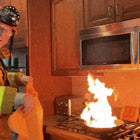 Fire
Fire Safety
Safety Survival
Survival Protection
Protection New
New Scouting America
Scouting America
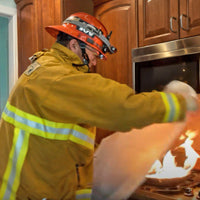 Fire
Fire Safety
Safety Survival
Survival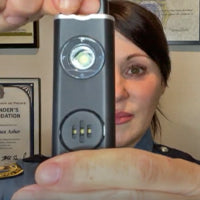 Protection
Protection New
New






